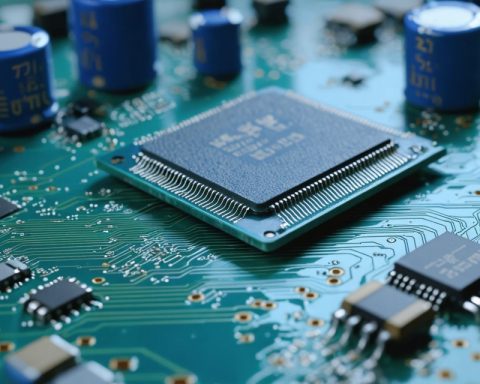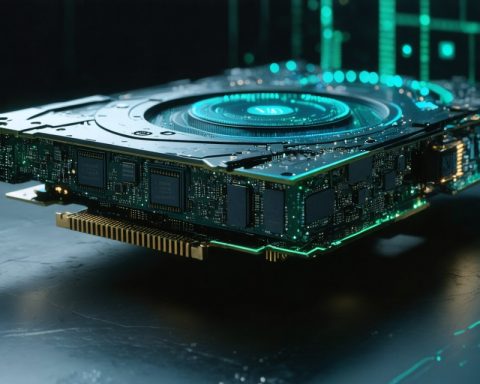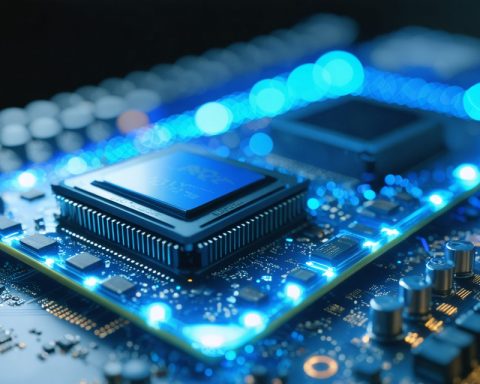- DuPont de Nemours achieved impressive Q4 earnings with $1.13 EPS on $3.1 billion revenue, surpassing expectations due to high demand in the electronics sector linked to AI advancements.
- The company plans to spin off its electronics division by November, focusing on growing its semiconductor technology and capitalizing on increased demand from AI applications and China.
- DuPont has raised its full-year profit forecast to $4.35 EPS, reflecting confidence in continued growth and strategic positioning.
- Looking to Q1 2025, DuPont predicts earnings of $0.95 per share, indicating optimism from CEO Lori Koch about the planned corporate restructuring.
- By embracing AI and restructuring, DuPont aims to enhance value, foster innovation, and remain resilient amidst market changes.
DuPont de Nemours has captured market attention with a remarkable leap in its stock performance, fueled by a potent mix of technological innovation and strategic foresight. In a surprising twist of fiscal alchemy, DuPont’s Q4 earnings soared past expectations, driven by burgeoning demand in its electronics sector—a beneficiary of the AI revolution. The company’s results reveal adjusted earnings per share hitting $1.13 on a robust $3.1 billion revenue, outstripping analyst predictions.
As DuPont eyes a future with sharper focus, it plans to refine its corporate structure, spinning off its electronics business into an autonomous entity by November. This strategic pivot signals a new chapter, propelling its semiconductor technology, where sales have surged significantly, buoyed by increasing AI applications and heightened demand from China. The company’s reinforced commitment is underscored by an upgraded full-year profit forecast, now set at a potent $4.35 EPS, up from prior estimates of $3.91.
In the immediate horizon, DuPont forecasts Q1 2025 earnings per share of $0.95, poised to outpace the market outlook. CEO Lori Koch exudes optimism over the impending split, envisioning rich opportunities for unlocking value and driving innovation. This nimble maneuver promises to not just weather the tides of market volatility but ride the waves of technological change, carving a resilient trajectory for DuPont’s legacy and future endeavors.
The key takeaway is clear: DuPont’s proactive embrace of AI and market realignment positions it as a trailblazer, heralding an era of growth and transformation.
DuPont’s Strategic Spin-Off: A Game-Changer in the Electronics Sector?
—
DuPont’s Bold Moves: What You Need to Know
How is DuPont leveraging AI and strategic foresight?
DuPont de Nemours has skillfully harnessed the AI revolution, significantly boosting its electronics sector. This surge in demand, particularly from China, has positioned DuPont’s semiconductor technology at the forefront of innovation. The decision to spin off its electronics business into an autonomous entity by November reflects DuPont’s strategic focus on maximizing growth in this lucrative area.
What does the market forecast look like for DuPont’s new ventures?
DuPont anticipates a strong outlook, with Q1 2025 earnings per share expected to hit $0.95, surpassing market expectations. The company’s enhanced full-year profit forecast of $4.35 EPS for 2025 demonstrates confidence in its refined corporate strategy and continued innovation in the semiconductor sector.
What are the pros and cons of DuPont’s spin-off strategy?
Pros:
– Increased Focus: By creating an independent entity, DuPont can focus more on its core strengths and achieve greater efficiencies.
– Unlocking Value: The spin-off is expected to unveil hidden value, thereby enhancing shareholder returns.
– Enhanced Innovation: Independence might lead to more agile responses to market changes and technological advancements.
Cons:
– Execution Risk: The transition process might face operational hiccups, affecting short-term performance.
– Market Volatility: Market fluctuations could impact the newly spun-off entity, posing challenges in its initial phase.
What are the main challenges and limitations DuPont might face?
– Market Dependency: The electronics sector’s reliance on AI and technology-driven demand could expose DuPont to cyclical market risks.
– Regulatory and Geopolitical Risks: Given the global nature of the semiconductor and electronics market, trade tensions and regulations might influence operations.
How does DuPont’s spin-off strategy compare to its competitors?
With other industry players like Intel and Texas Instruments refining their focus on specific segments, DuPont aims to differentiate itself by a targeted realignment through spin-offs. This approach can lead to a competitive edge, although it necessitates nimbleness and adept market navigation.
Emerging Trends and Innovations
What are the current trends shaping DuPont’s market?
– AI Integration: AI continues to drive demand for semiconductor technologies.
– Sustainability: There’s a growing push for environmentally sustainable solutions, encouraging innovation in resource-efficient electronics.
– Asia-Pacific Growth: The region remains a hotspot for electronics demand, particularly in semiconductors.
What predictions can be made for DuPont?
DuPont’s strategic realignment, coupled with its embrace of AI, positions it to capitalize on emerging technological trends, potentially leading to sustained growth and market leadership in the semiconductor sector.
Relevant Links
For more on DuPont’s strategic moves and market insights, visit the company’s official website: DuPont.
—
Stay tuned for further updates as DuPont navigates its transformative journey, leveraging technological advancements and strategic pivoting to shape its future.

















